Credit Elon Musk’s futuristic Cybertruck with keeping the hype for electric trucks and utility vehicles at a fever pitch. A smattering of new electric vehicle offerings launched this year from the likes of Mercedes-Benz and Audi, joining the widening field of battery-electric options, and with more traditional SUV appearances, you won’t have to decide if you’re comfortable driving a monolithic truck that’s got sharper corners than the pleats on your grandfather’s slacks. Here, we break down the Mercedes-Benz EQC, the Jaguar I-Pace, and Audi’s e-Tron to see which electric SUV is right for the adventurous spirit, with an eye on getting out and exploring the roads and what lies ahead when you want to leave the asphalt in your rearview mirror.
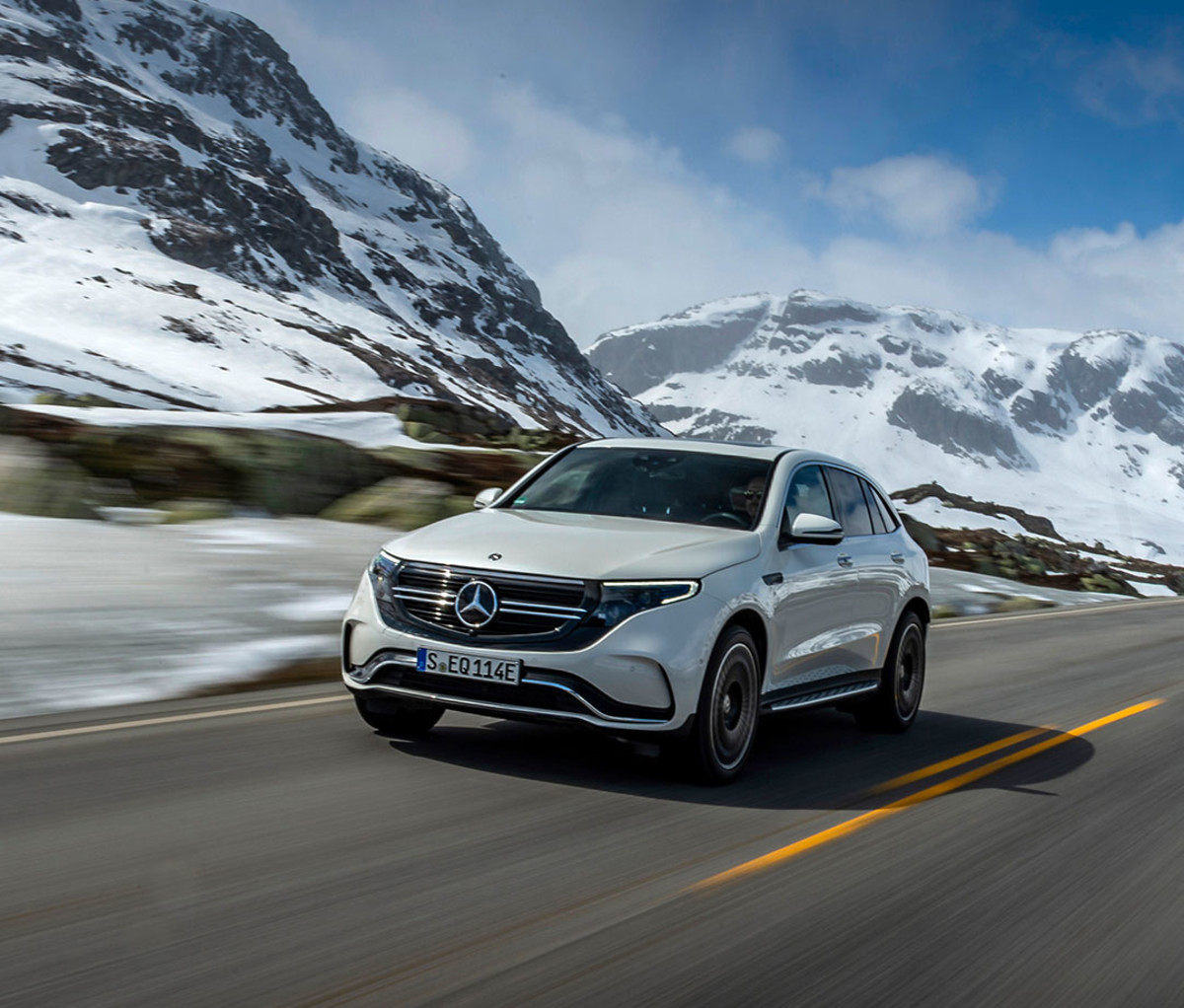
Mercedes Benz EQC
What Is It?
We spent five glorious days road-tripping from Oslo, Norway, to Hamburg, Germany, in Mercedes-Benz’s harbinger for electrification: the EQC400. The first Merc in the EQ sub-brand of battery-electric vehicles is a handsome compact SUV offering, with a platform shared with the popular GLC-class crossover, but the interior and exterior have been completely reimagined to match the ethos of the ute’s electric powertrain. An 80 kWh battery pack sits low in the chassis, feeding energy to two motors, one mounted on each axle. The front motor is smaller, in a bid for efficiency, and handles the majority of sedate daily driving activities, while the larger rear motor can instantly activate to increase the power for more spirited driving and whenever the EQC needs additional traction. When both motors are engaged, the peak output is 402 horsepower and 561 lb-ft of torque, more than ample to propel the 5,500-lb SUV to 60 seconds in about 5 seconds.
While that’s slower than, say, a Tesla Model X’s tear to 60 (the deed happens in 4.4 seconds in a regular trim Model X, and drops down to a blistering 2.7 seconds in the Performance variant), it’s still exceedingly quick for a vehicle of its size. Burying the accelerator, we easily blurred the idyllic Norwegian countryside, both motors whirring at full-tilt. Sport mode will be best suited for dynamic driving, and the low center of gravity (due to the battery pack) means the EQC handles relatively well, hunkered down in long sweeping corners, and you can shuffle it through tighter turns with ease (and a bit of understeer, if you’re really pushing).
Eco mode and Max Range are available, should you wish to try your foot at “one-pedal” green driving. Steering wheel paddles don’t change gears in the EQC; they change the amount of regeneration of energy. Lift from the accelerator and the EQC will recuperate energy from the wheels as the SUV slows. Five levels are offered, the most aggressive of which can capture up to 75 percent of the maximum regeneration feasible. In that mode, we found that you don’t need to brush the brakes heading into a corner; simply lift off the go pedal and the EQC will slough considerable speed while funneling energy back to the battery.
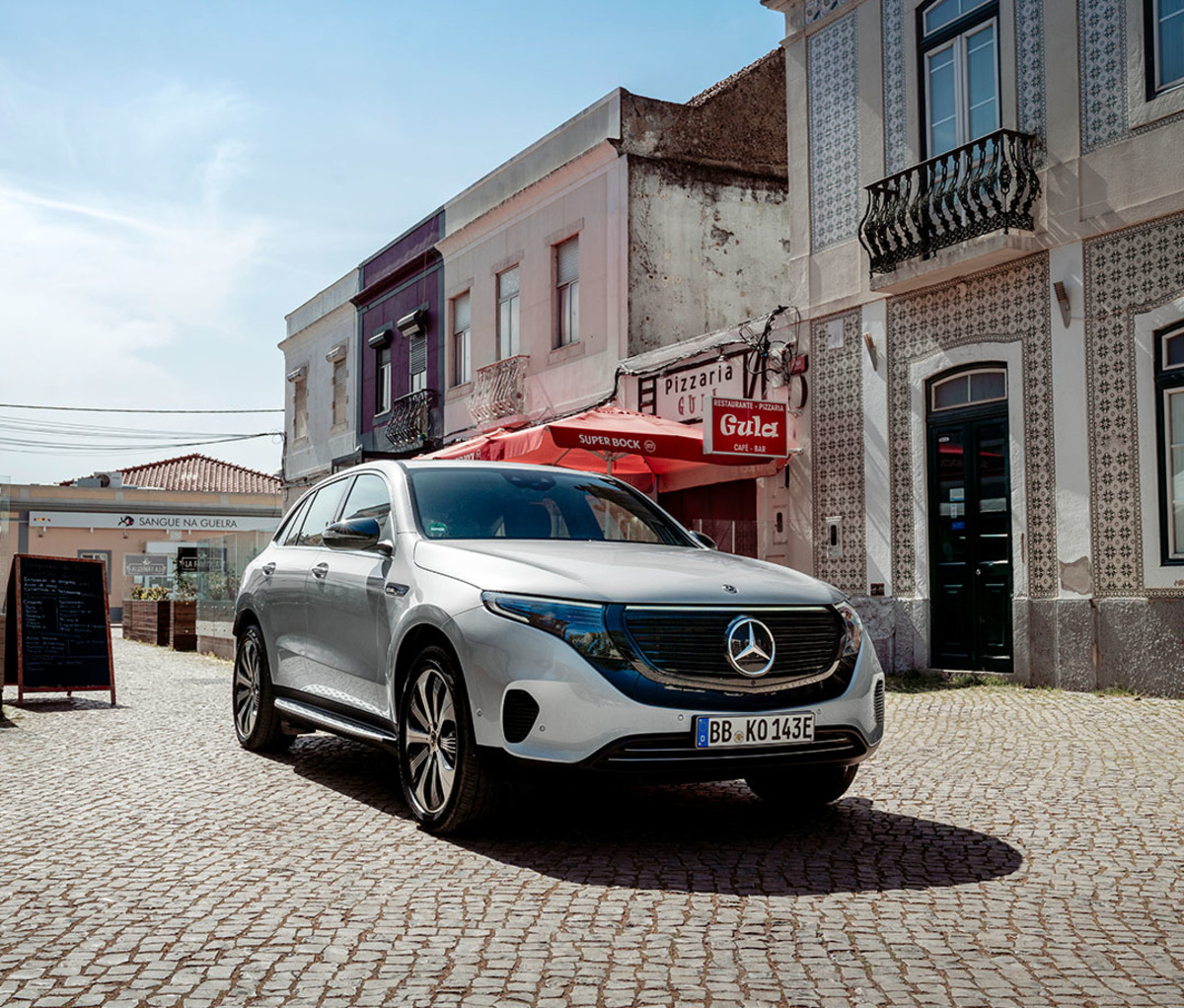
Who’s It For?
The luxuriously minded road-tripper. This $70,000 SUV is a Mercedes-Benz first and an electric vehicle second, so the emphasis is on an upscale interior befitting of the Tri-Star on the prow, and the smooth and powerful driving characteristics you’ve come to associate with the German manufacturer. Thanks to a heap of sound-deadening materials, the hundreds of European miles we logged melted by quietly and comfortably. The EPA has yet to weigh in with an official range, but expect it to be somewhere around 200 miles. We found charging to be a breeze, in part because the infotainment system will automatically plot the various charging stations you’ll need along your path as waypoints. At fast charging stations up to 110 kW, (abundant in Norway and other Scandinavian countries, where EVs outsell combustion-engined vehicles), you can get to 80 percent charged in about 40 minutes, depending on your starting state-of-charge.
There’s ample room for outdoors gear, if you’re headed to go hiking or toting family and friends to the beach. While the all-wheel drivetrain can adjust on the fly to help provide traction to spinning wheels when the asphalt ends, there’s no off-road mode to keep you moving forth when the terrain gets truly tricky. It did hold its own when our group of EQCs encountered a long expanse of empty beach in Sweden, playfully drifting around the sandy surface with a lightness that belies its curb weight.
It’s also great for analytically-minded folks who will appreciate the gamification aspect to one-pedal driving. It can be addicting to see how much energy you’re able to recuperate and how efficiently you can drive. Added systems in the car’s CPU will help show you how “green” you’re driving, and the ability to alter the regeneration levels is fun to fiddle with as you try to find maximum efficiency. In the German countryside, we managed to make it 25 miles without touching the brake pedal.
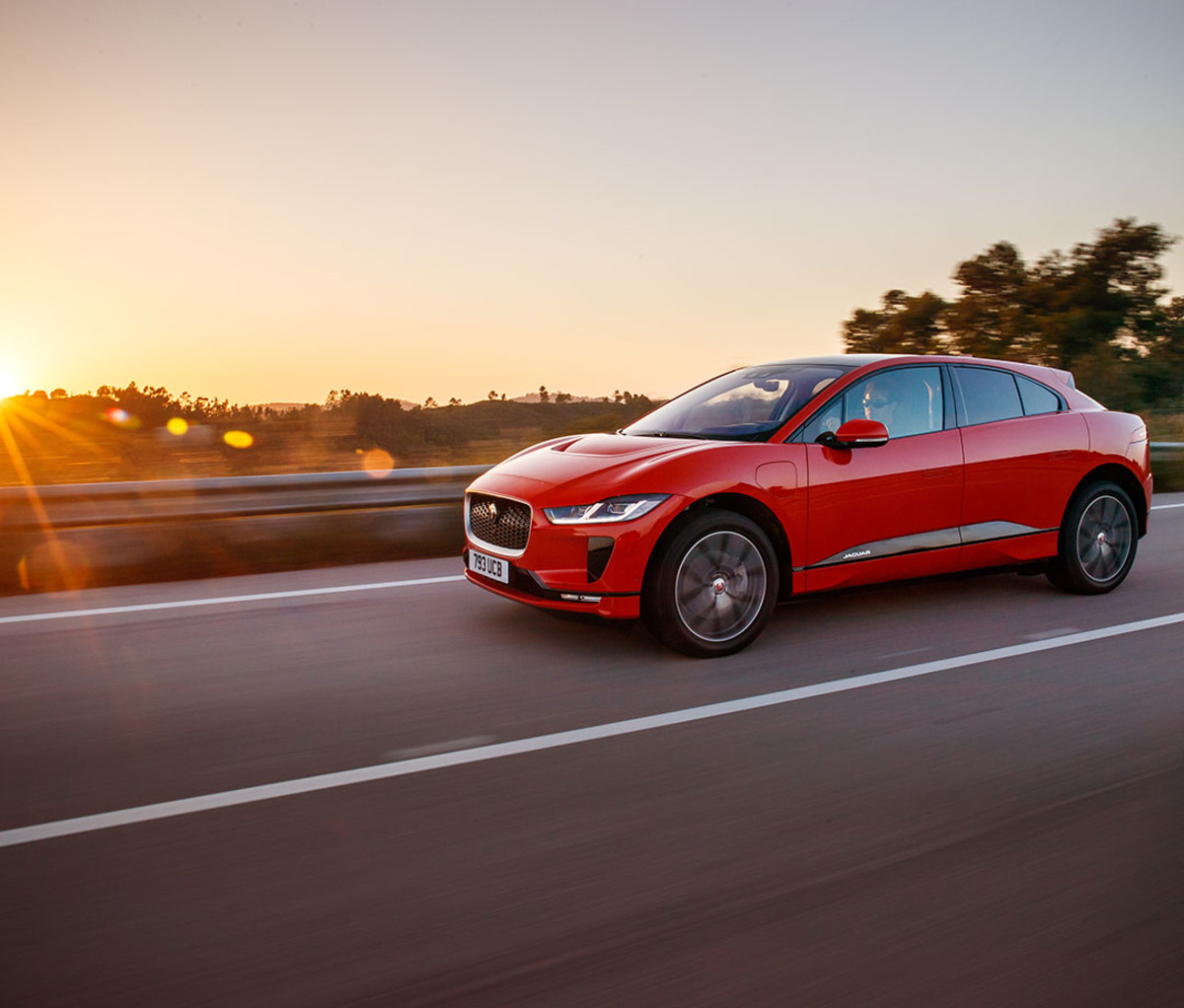
Jaguar I-Pace
What Is It?
Jaguar’s I-Pace is the British marque’s first foray into the electrified realm, and it’s been on the market for a little more than a year. In that time, it’s racked up some lauded accolades, including snagging the titular 2019 World Car of the Year award. It’s a looker, with handsome haunches that show off its curves in all the right places but it’s not just another pretty face; it’s capable and surefooted in a variety of driving situations, too.
Two motors, one on each axle, provide 394 horsepower and a rollicking 512 lb-ft of yank, deriving energy from a 90 kWh lithium-ion battery pack. The I-Pace is the lightest of this trio, tipping the scales at 4,784 pounds, and that (relative) lightness translates into increased sportiness in the handling. While we did find the steering “a tad numb,” it’s got the acceleration of a smaller sports car, ripping to 60 in 4.5 seconds, and it’ll carve far better than it has a right to in mountainous sweepers, as we experienced zipping around upstate New York and in Massachusetts. This thing is a proper hoot to drive. Put your foot down and a growing grin won’t quit for as long as you’ve got the asphalt and cojones to stay in it. It’ll tackle tighter exchanges with zeal (and a satisfying bit of wheel squeal).
That kind of hard-wheeling fun does come at the expense of your range. The I-Pace enjoys an EPA rating of 234 miles, though on another test, we “finished with 30 miles left in its ‘tank’ after a 140-mile jaunt.” While that’s not great, the automaker’s released an early gift for I-Pace owners this holiday season: 12 extra miles of range. In part due to lessons learned in the I-Pace-only racing series, and also due to insights gleaned from the thousands of I-Paces that’ve been driving over the last year. Unlike a Tesla, it’s not an over-the-air-update; Jag owners will have to bring the I-Pace to a dealer to get the boost up to 246 miles of range. Charging on a DC fast-charger gets you back to 80 percent in about 40 minutes, conditions permitting.
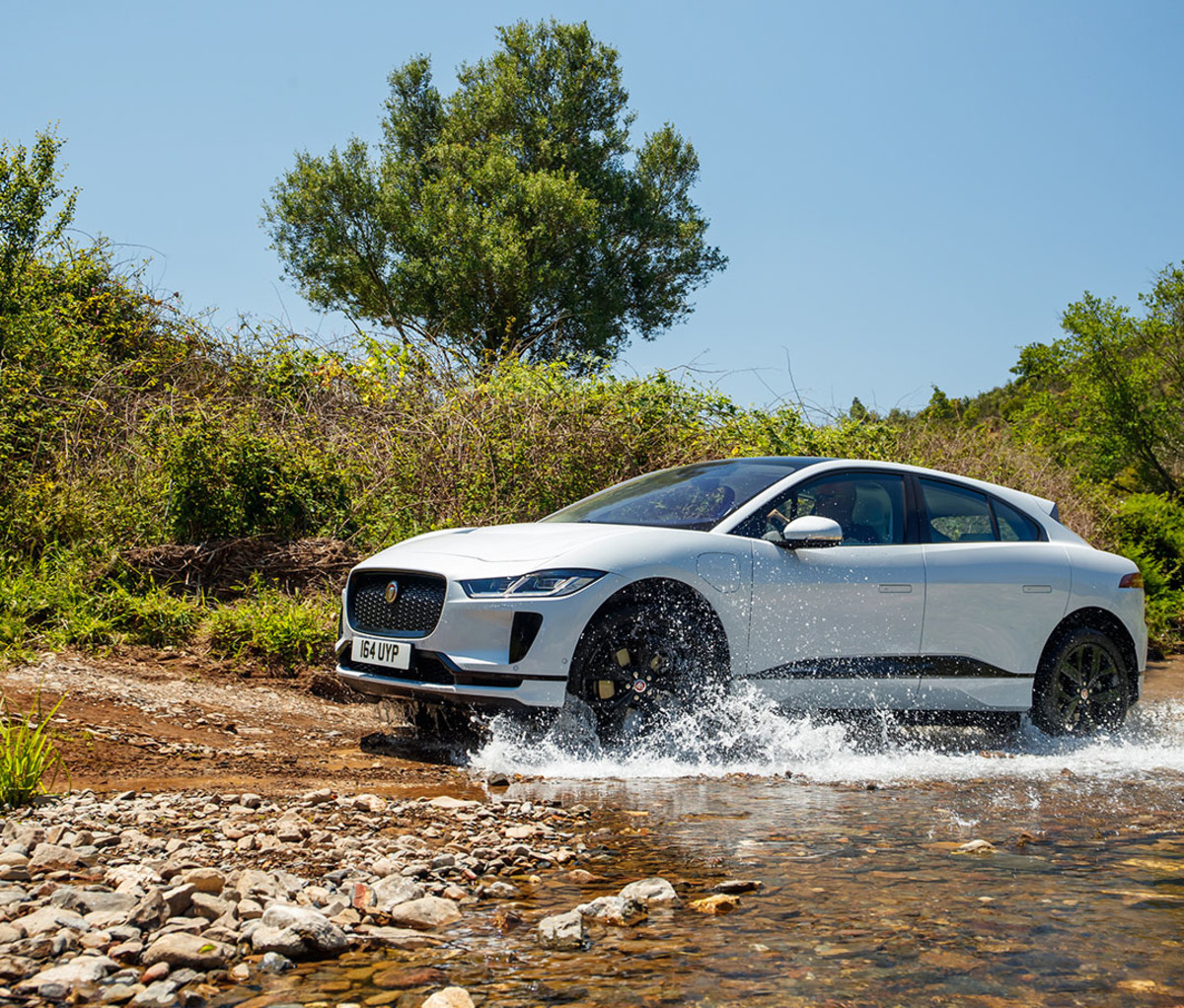
Who’s It For?
The adventurous outdoorsman. Thanks to an adjustable-suspension that’ll lift up an extra 2 inches beyond the standard 6 inches of ground clearance, the I-Pace can ford through up to 2 feet of standing water (that’s on par with a Jeep Cherokee Trailhawk) and use all that delicious torque to clamber up steep inclines with ease. Jaguar’s part of the Land Rover family and some of the indomitable prowess from those delightfully capable off-roaders has been ported over here. There is a trail ascent and descent crawl mode where the I-Pace handles the accelerating and braking for you.
Plus, the bottom of the entire battery pack is flat, like a giant skid plate, making it rather impervious to off-road dangers. You won’t get an exhaust tube or differential housing cover scraping along as you navigate more jagged terrain. Even if you never dip a tire off-road, the all-wheel-drive system and the 50:50 power split between front and rear mean you’ll be just fine in whatever crud Mother Nature throws your way, including snowy conditions.
There’s plenty of storage for your crew and gear, too, with 25.3 cubic feet of cargo area, which leaps up to 51 cubic feet if you want to tuck away the back seats. Optional bike racks that mount to a tow hitch can tote two mountain bikes, and optional roof rails allow you to stow kayaks, surfboards, or anything else you can safely secure up top.
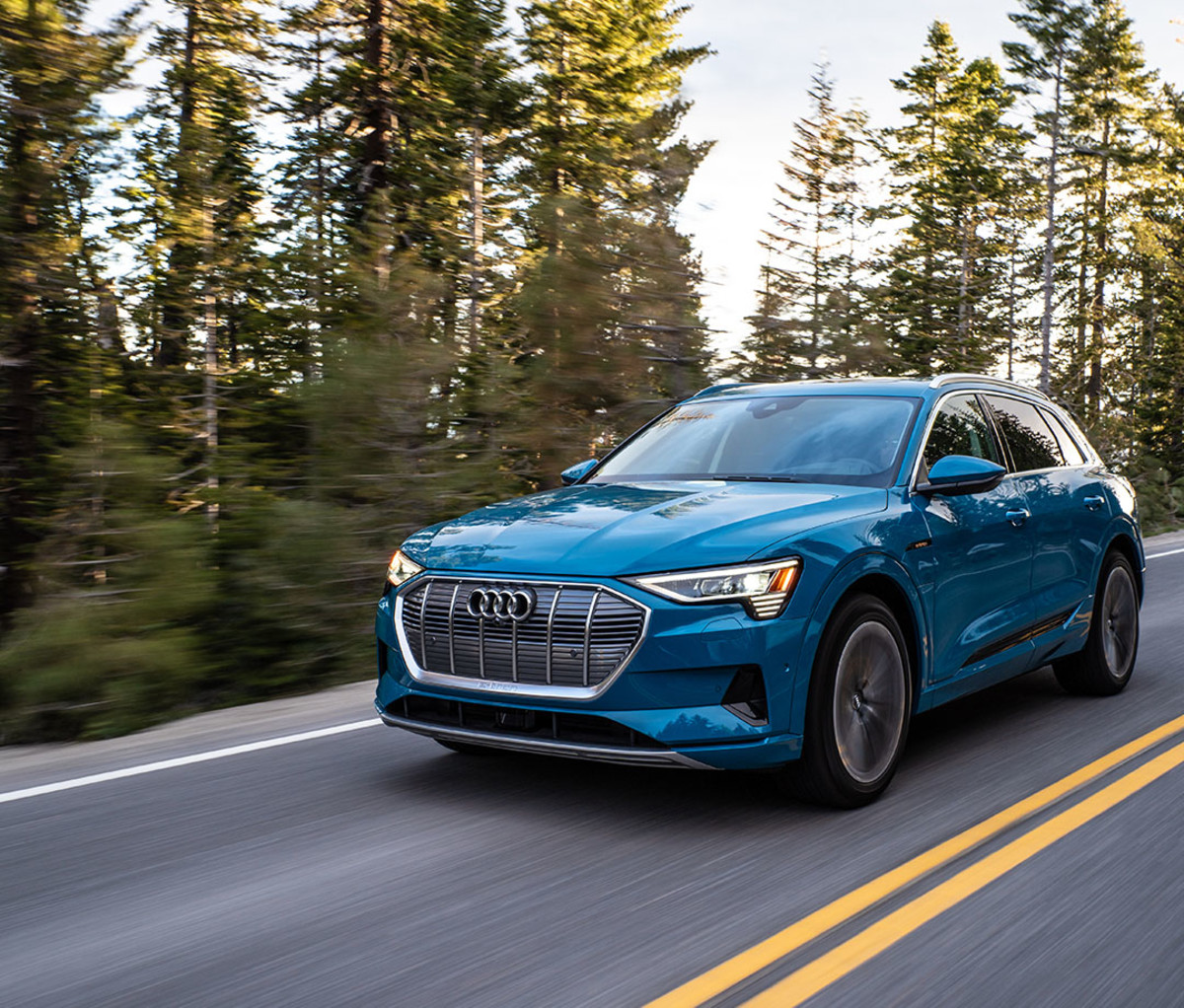
Audi e-Tron
What Is It?
Audi sought to make an eSUV that felt as natural to drive as one of its combustion-powered units, and the e-Tron ticks all those boxes. The Germans eschewed trying to reinvent the exterior to signify that what’s barreling up in your rearview is an EV in favor of its existing sharp and sporty clean SUV design, and it suits the e-Tron well. Subtle tweaks, including more brightwork, and the obvious exhaust delete, badging, and aero blades low in the doors are the only demarcations that this isn’t a Q8. Size-wise, the e-Tron is the largest of the trio discussed here, falling somewhere between a Q5 and a Q8, and the additional wheelbase length is especially appreciated when riding in the rear.
The interior is overflowing with touch screens and luxe niceties, befitting the Audi name. It’s the most costly of the trio, too, ringing the register between $74,800 and $81,800, depending on whether you want the Premium Plus or the Prestige trim. But the sumptuous, forward-thinking interior means you’re getting plenty for that sum.
The e-Tron is powered by a 95-kWh battery that feeds two motors, one fore, one aft. In concert, the all-wheel-drive set-up churns out 355 horsepower and 414 lb-ft of twist, beyond sufficient to get the 5,500-pound ute hauling. It’s not blisteringly quick, with the scramble to 60 happening in 5.5 seconds, but it’ll still give you a satisfactory rush on take-off. There’s an overboost feature, activated by simply depressing the accelerator pedal harder, that’ll give you 402 horsepower and 490 lb-ft of torque, but only for eight seconds. That cap on the extra juice is in a bid to save enough energy for regular daily driving. When you’re not cooking it, the e-Tron is a sedate and quiet machine. Sound deadening foam abounds, even inside the wheels, in an effort to mitigate all noise. It’s effective, eerily so at points during highway driving when you realize you can clearly listen to the sound of your own breath while you’re doing 85 miles an hour, as we discovered in the desert roads of Abu Dhabi during the e-Tron’s launch.
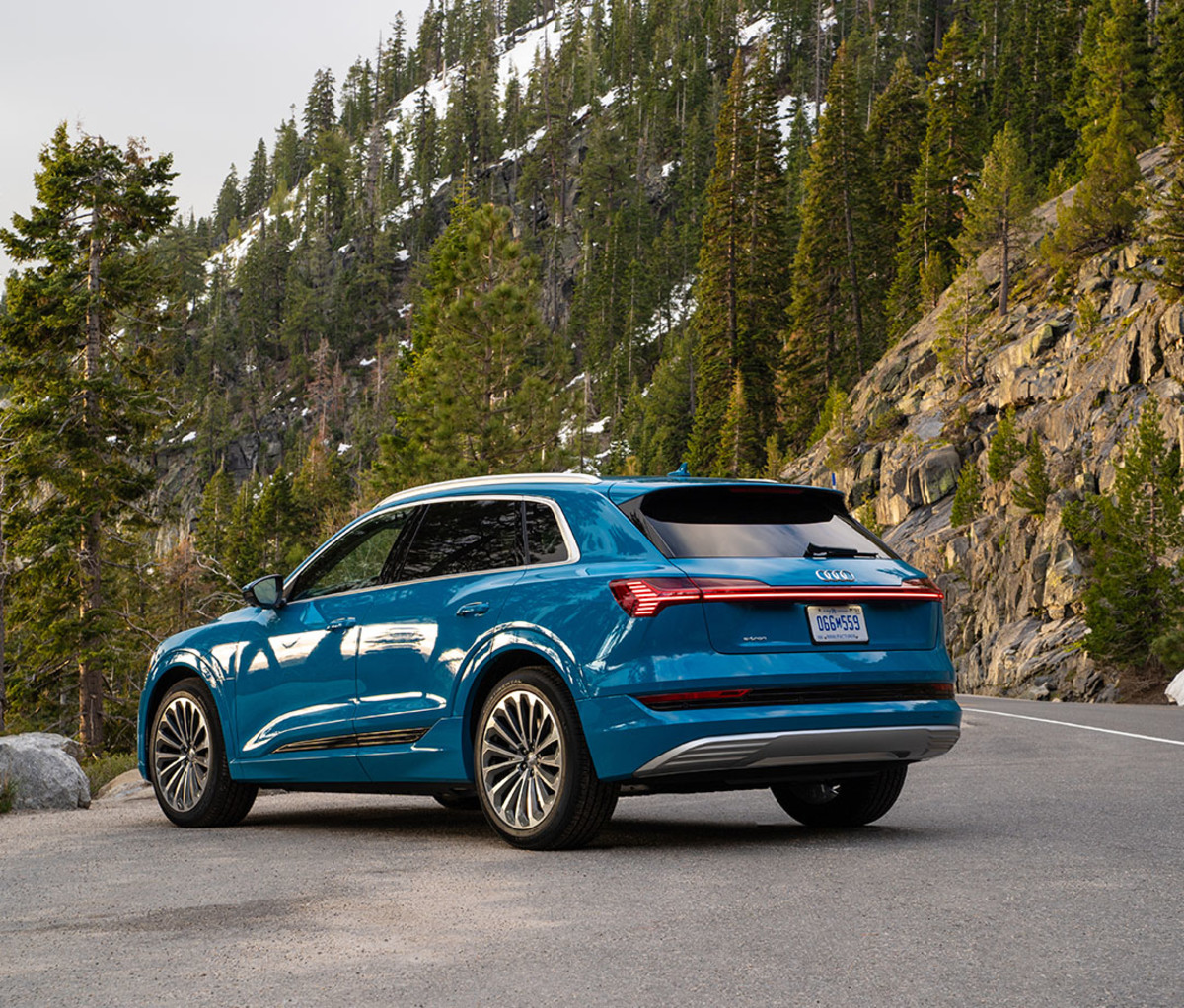
Who It’s For
Thrill-seekers looking to venture far off the beaten paths. We flogged the e-Tron through the sandy dunes of Abu Dhabi’s burnt orange deserts, where it happily lapped up the undulating and soft terrain with ease. You can hang out the backend, drifting around corners, or just rip through deeper sand; the e-Tron’s adjustable suspension is well-suited no matter what you’re plowing through. An off-road course set up during the launch saw the e-Tron best steep and rocky inclines, with some exchanges that left only three tires touching the ground. The off-road driving mode lifts the e-Tron up about 2 inches to avoid obstacles, and torque-vectoring will keep the power flowing to the wheels that need it most.
We also journeyed from Napa Valley to Lake Tahoe, an uphill journey that saw us on snow-covered mountain passes. In one expanse where a fresh blanket of snow left a sinewy hilltop road looking more treacherous than passable, the e-Tron didn’t shudder once as it forged ahead. The extreme hot and cold climates had little effect on the battery’s state of charge, a compliment to the engineers for perfectly modulating the temperature of the drivetrain. On offer is 204 miles of range and, with a DC fast charger, you can charge up to 80 percent in as little as 25 minutes, something we observed in both the brutal heat and frigid cold locales thanks to the battery’s pre-conditioning system.
The e-Tron also represents one of the most natural driving feels for an EV during daily use. A clever braking system means that when you hit the brake pedal, 90 percent of the time, it’s simply faking the feel of hydraulic braking. Instead of applying the calipers to rotors, the e-Tron is using the motors to slow the wheels while recuperating the energy, recharging the batteries. It’s so seamless, you’d never be able to tell. (Don’t worry; the hydraulic brakes work wonderfully and will kick in flawlessly under hard braking events.) It’s a great transition vehicle for those looking to ditch combustion but not wanting a completely different driving feel.
from Men's Journal https://ift.tt/2PPfSGQ
No comments:
Post a Comment